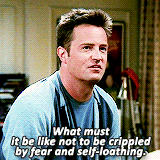Halloween is most often remembered as a time for costumes, candies, spooky stories, and haunted houses. What most people don't know is that the holiday is more than trick-or-treating, and getting your fair share of chills and thrills. With a story starting nearly 2,000 years ago, Halloween's own origin might be one of the most fascinating tales you'll hear this season.
It all started with the Celtic holiday of Samhain. Roughly translated to "summer's end," Samhain was celebrated on the first of November, and was one of the most important holidays, as it was the time that all the crops were harvested and stored, and livestock was rounded up and housed for the winter. Samhain was also considered the Celtic new year because it was celebrated around winter, a season associated with death and thus, the end of an eternal cycle. While various narratives provide varying accounts, there are some hints that Samhain might have also been a time when the chance for connections with the "other side" was particularly high. According to some historians, Celts would pay tribute to their conquerors, as per their ancient sagas. Other historians, however, suggest something a little more familiar to the Halloween spirit. On Samhain, supernatural energy would be at its highest and spirits would walk among the living. Some of these spirits were malicious, ruining crops and causing trouble. Others would provide the Celtic priests, Druids, with visions of the future. And yet others would simply be the spirits of those who had died during the year, preparing to move onto the other world.
As the Roman Empire began to conquer Celtic lands, holidays like Samhain were banned and replaced with more Roman celebrations like Feralia and Pomona. Feralia was a holiday much like Samhain, on which Romans would traditionally celebrate the dead. Pomona celebrated the goddess Pomona and, as the goddess of apples, is most likely the holiday that introduced the tradition of bobbing for apples.
Shortly afterwards, there were efforts being made across the Roman Empire to convert people to Christianity. One of these efforts was made by Pope Gregory III, who passed an edict that expanded the Catholic feast of All Martyrs' Day to include saints, and shifted the celebration from May 13 to Nov. 1. This resulted in an overlap between the traditional "pagan" holidays and the Catholic holiday. The Catholic holiday of All Souls' Day was also shifted to Nov. 2 and was a day to celebrate the dead. It was considered an effort to further replace pagan holidays like Samhain. Around All Souls' Day, big bonfires and parades were held. The tradition of dressing up as saints, angels, and demons also began, contributing to the modern-day custom of costumes. All Souls' Day was also known as All-Hallows, as hallows meant holy. As the night before All-Hallows was the most intensive to prepare for the day of the celebration, many began to focus some importance on the day before. This preparation resulted in naming the day "All-Hallows Eve" and — eventually — Halloween.
Halloween was then brought over to the U.S. by the British colonists who carried their Protestant beliefs along with them to the new world. Slowly, the European Christian traditions began to mix with the Native American celebrations, creating the more familiar American Halloween. This new version of the holiday included huge parties to celebrate the harvest, sharing stories about the dead, and just making trouble, such as playing tricks on unsuspecting victims.
The influx of Irish immigrants in the mid-1800s brought along the tradition of trick-or-treating. The "treat" part of the custom was related to the medieval practice of "souling," where the poor would dress up in various disguises and knock on doors for food or money. The "trick" half first began as an empty threat, but pranks and mischief occurred long before the tradition of trick-or-treating. In order to avoid more serious or dangerous pranks such as vandalism and theft, tricks were incorporated into trick-or-treating as a safe alternative that could be avoided by providing "treats."
In the early 1900s, Halloween became more of a celebration to be shared among the community and lost its religious flare. However, its movement towards more secular accents made the holiday more accessible for all. It became a holiday to build relationships between neighbors and generally involve the whole neighborhood in some community fun.
Today, there have been plenty of traditions that have sprung from the holiday spirit. From jack-o-lanterns to haunted houses, Halloween has taken on a life of its own and continues to grow. So celebrate this age-old holiday and keep the spirit alive.









































